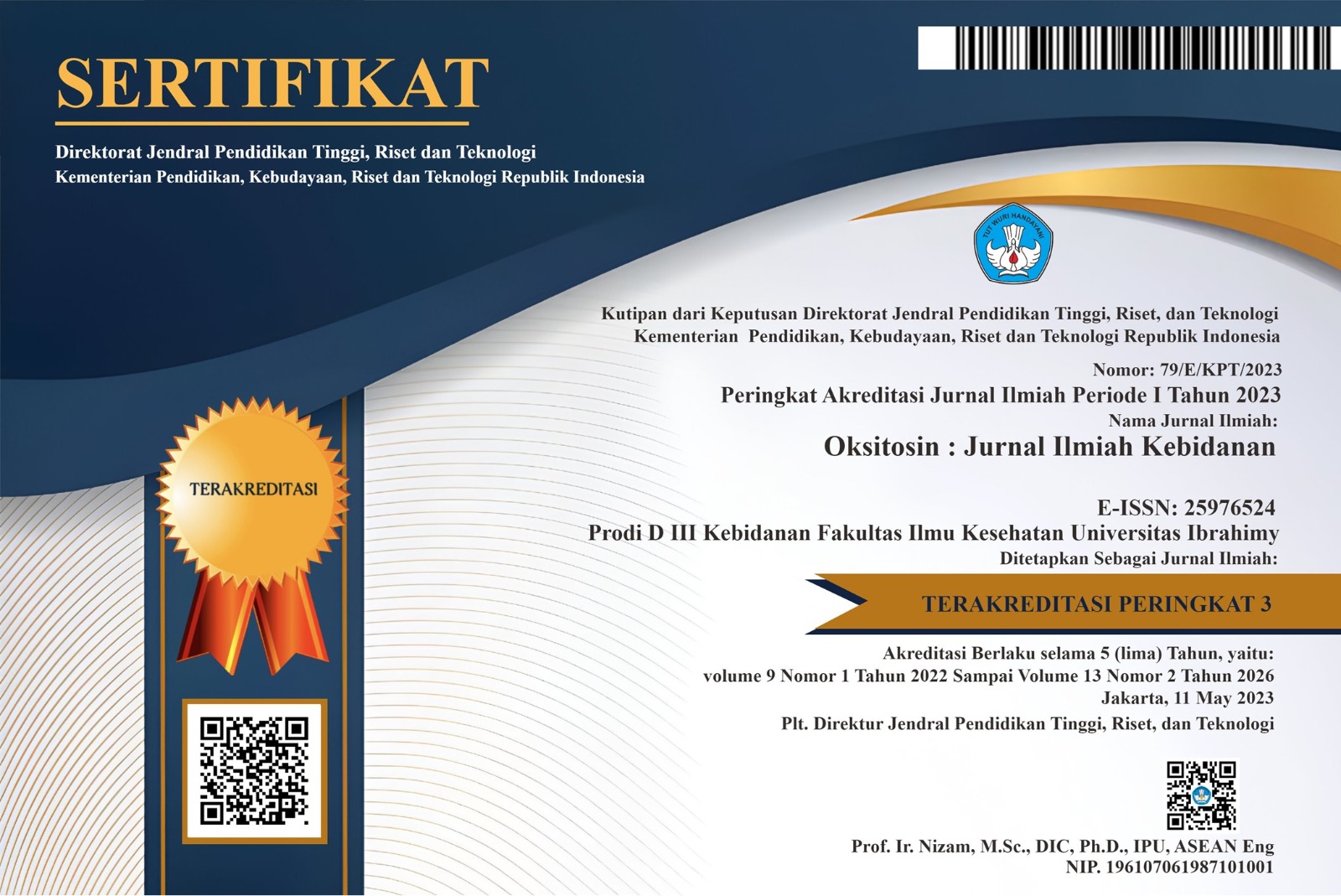Uji Organoleptik Formulasi Biskuit Ikan Tuna sebagai Makanan Tambahan pada Balita Stunting
Abstract
The processing of food materials to meet human nutritional needs can take various forms, including the production of biscuits. Nutrient sources derived from animal-based processed foods are considered superior compared to other sources of protein. Tuna stands out as an affordable animal protein source widely available in the community, enriched with essential nutrients such as omega-3, iron, magnesium, and more. The abundant nutritional content in tuna serves as the basis for conducting research on the formulation of complementary feeding (MP-ASI) in the form of tuna biscuits as an effort to prevent stunting. This research employs an experimental design involving the stages of creating tuna biscuit formulations and conducting organoleptic tests to determine the optimal biscuit formulation. Based on the results of the organoleptic test, tuna biscuits with formula 3 gave the most preferred taste, colour and aroma and texture to the panelists with a score of 15, followed by formula 2 with a score of 14 using the hedonic test formula.
Downloads
References
Real Nurs. J., vol. 3, no. 1, 2020.
[2]Kementerian PPN/ Bappenas, “Pedoman Pelaksanaan Intervensi Penurunan Stunting Terintegrasi di Kabupaten/Kota,” Rencana Aksi Nas. dalam Rangka Penurunan Stunting Rembuk Stunting, no. November, pp. 1–51, 2018, [Online]. Available: https://www.bappenas.go.id.
[3]Kementerian Kesehatan RI, “Buku Saku Hasil Studi Status Gizi Indonesia (SSGI),” Book, p. 167 halaman, 2021.
[4]P. S. Kereh, M. E. Pascoal, and Y. A. Tomastola, “Menu ‘Tuto’ Tepung Sagu Arenga Microcarpa Sebagai Mp-Asi Pertama Terhadap Status Gizi Bayi Di Kabupaten Kepulauan Sangihe,” Gizido, vol. 8, no. 1, pp. 45–62, 2016.
[5]S. I. M. Wodi and F. J. Rieuwpassa, “Biskuit Tinggi Protein Berbasis Daging Ikan dan Tepung Sagu ( High Protein Biscuit Meat and Sago Flour-Based ),” J. Ilm. Tindalung, vol. 3, no. 2, pp. 73–77, 2017.
[6]A. Y.Pomalingo and Misnati, “Pengaruh Penambahan Tepung Ikan Tuna Terhadap Daya Terima dan Nilai Gizi Biskuit Kelor,” J. Heal. Sci., vol. 5, no. 1, pp. 155–166, 2021.
[7]N. Basri, M. Sididi, and Sartika, “Faktor yang Berhubungan dengan Kejadian Stunting pada Balita (24-36 Bulan),” Wind. Public Heal. J., pp. 416–425, 2021, doi: 10.33096/woph.v1i5.98.
[8]O. Nelya, S. Sri, and A. Sugesti, “FAKTOR YANG MEMPENGARUHI KEJADIAN STUNTING PADA,”J. Kesehat., vol. 14, no. 1, pp. 46–54, 2021, doi: 10.24252/kesehatan.v14i1.15498.
[9]M. Ahmad and M. A. Rifqi, “Pie Substitusi Tepung Biskuit MP-ASI Kemenkes dan Isolat Protein Kedelai Sebagai Alternatif Pencegahan KEP Pada Anak Usia 12-24 Bulan,” Amerta Nutr., vol. 3, no. 4, p. 284, 2019, doi: 10.20473/amnt.v3i4.2019.284-290.
[10]S. Lestiarini and Y. Sulistyorini, “Perilaku Ibu pada Pemberian Makanan Pendamping ASI (MPASI) di Kelurahan Pegirian,” J. PROMKES, vol. 8, no. 1, p. 1, 2020, doi: 10.20473/jpk.v8.i1.2020.1-11.
[11]A. U. Zogara, “Pemberian Makanan Pendamping ASI (MPASI) Dan Status Gizi Balita Di Kelurahan Tuak Daun Merah,” Kesehatan, vol. 4, pp. 112–117, 2020.
[12]H. Utari, F. Fujiana, and Murtilita, “Pemberian Makanan Pendamping Asi Dini Terhadap Kejadian Stunting Pada Balita : Literature Review,” Pemberian Makanan Pendamping Asi Dini Terhadap Kejadian Stunting Pada Balita Lit. Rev., vol. 1, no. 1, p. 7.
[13]P. W. N. Marlina, R. R. D. A. Maulianti, and M. M. Y. Fernandez, “Pengembangan Biskuit Mpasi Berbahan Dasar Berbagai Macam Tepung Sebagai Produk Inovasi Mpasi,” Media Gizi Mikro Indones., vol. 10, no. 1, pp. 27–38, 2019, doi: 10.22435/mgmi.v10i1.587.
[14]Kemenkes RI, “Buku KIA Kesehatan Ibu dan Anak,” Kementrian Kesehat. RI, 2020.
[15]E. S. Y. Siregar, V. P. Siregar, and S. B. Agus, “Analisis daerah penangkapan ikan tuna sirip kuning,” J. Ilmu dan Teknol. Kelaut. Trop., vol. 10, no. 2, pp. 501–516, 2018.
[16]Fadila and Juhartini, “Mutu Organoleptik Dan Kandungan Histamin Penyedap Rasa Bubu Ikan Tuna Sirip Kuning (Thunnus Albacares),” J. Hosp. Majapahit, vol. 13, no. 1, pp. 1–20, 2021
[17]INDONESIA, Standar Nasional. Petunjuk pengujian organoleptik dan atau sensori. Badan Standar Nasional, 2006..
[18]Ika Astiana, dkk, Karakteristik Organoleptik Dan Nilai Gizi Biskuit Ikan Dengan Fortifikasi Tepung Surimi Ikan Swanggi. JPHPI 2023, Volume 26 Nomor 1. http://dx.doi.org/10.17844/jphpi.x26il.44286, 2023.
Copyright (c) 2024 Oksitosin : Jurnal Ilmiah Kebidanan

This work is licensed under a Creative Commons Attribution-NonCommercial-ShareAlike 4.0 International License.




















